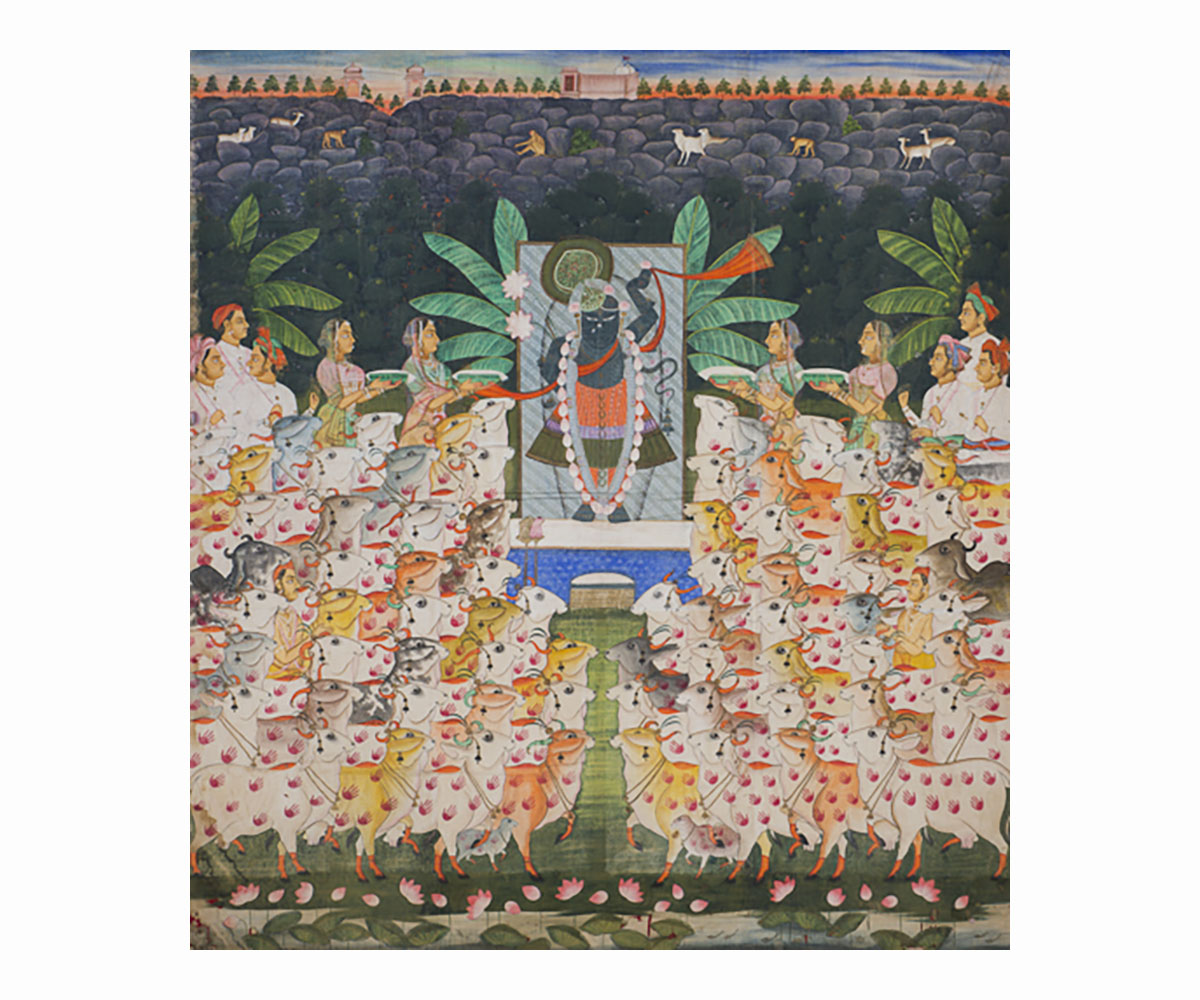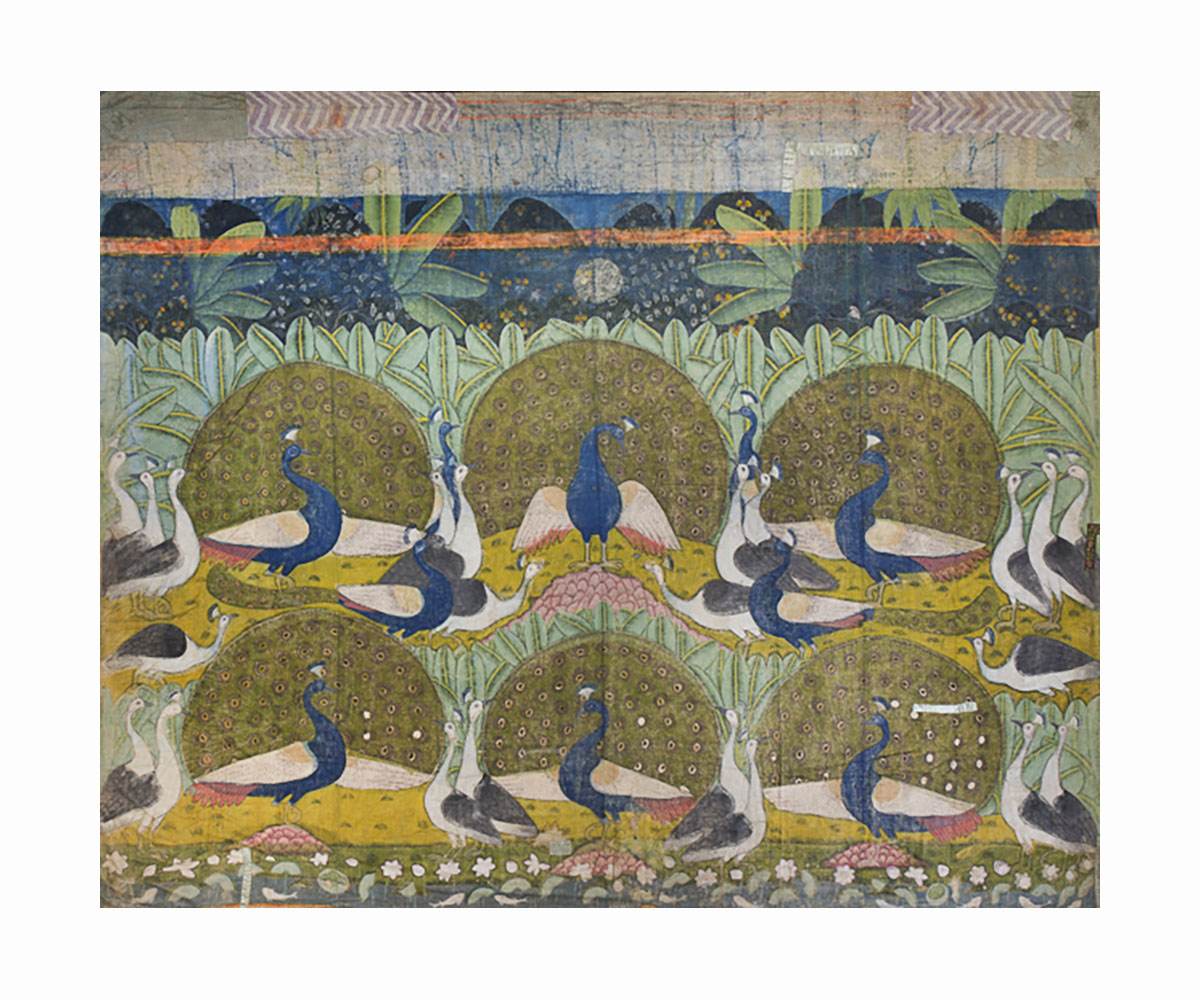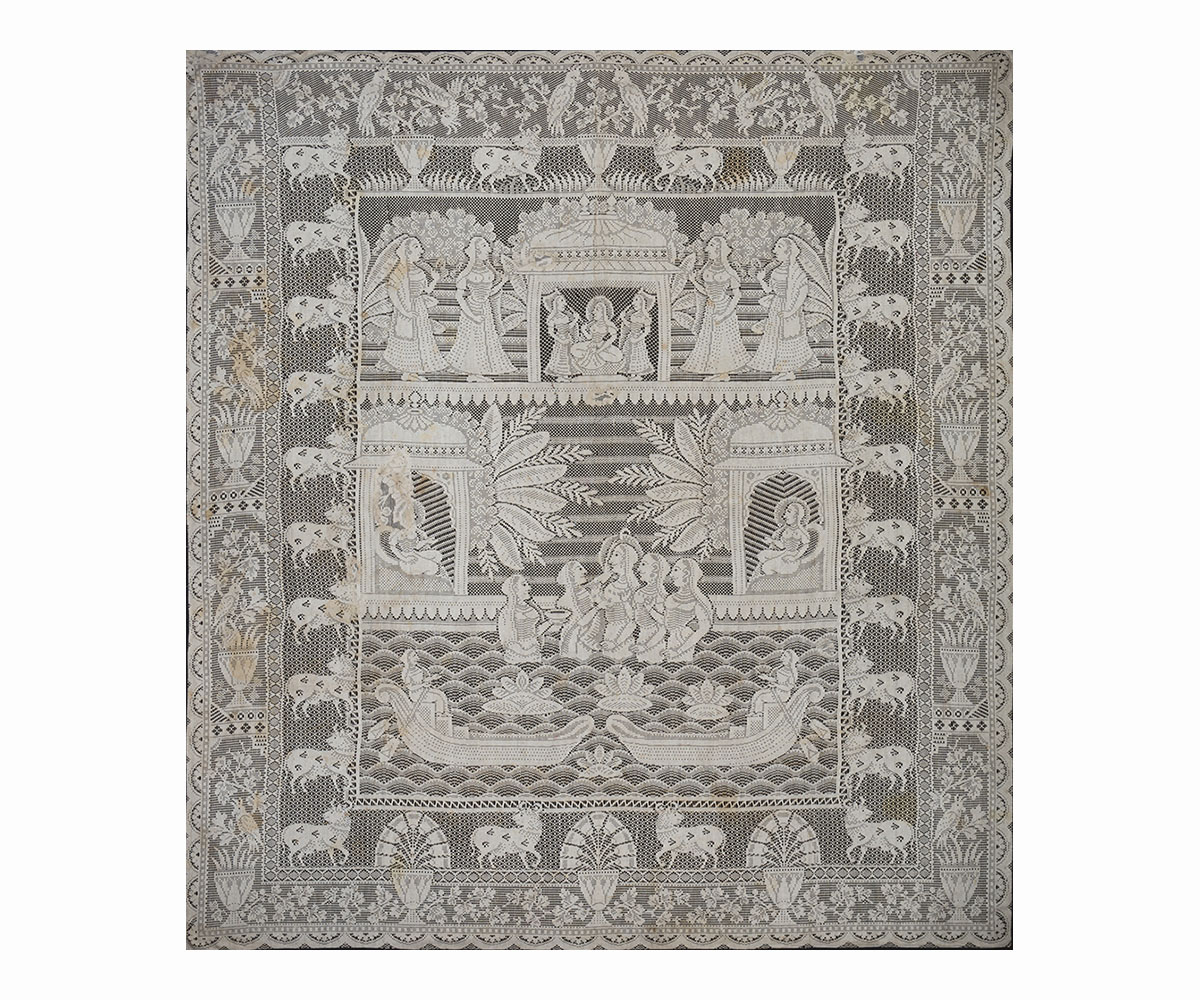ARTICLE
Pichhwai
A devotional tradition where the cloth was painted with images for veneration and hung behind the deity, pichhwai means “that which hangs back”. The tradition emerged from the temple town of Nathdwara, near Udaipur, Rajasthan where the shrine of Nathdwara was built in the seventeenth century and the idol of Krishna installed here was moved from Mathura during the reign of Aurangzeb. Under the protection of Maharaja of Mewar, Raj Singh, the shrine came to be known as the Haveli of Shrinathji and was revered by the adherents of Pushtimarg, a Vaishnavite sect that worshipped Krishna as a child-god in the form of Srinathji. When the haveli of Nathdwara was set up artists migrated from Kota and Kishangarh to join its atelier, which is why pichhwais bear a resonance with the Rajasthani school of painting, particularly with the Mewar school. The atelier had a system where a master was at the top followed by a body of assistants who were in turn assisted by their apprentices. The artists primarily came from three sub-castes: Adi Gaur, Jangid and Mewaras, but little is known about how they got into the profession. Many paintings, from the nineteenth century onwards, bear the name of artists on them.
Most commonly pichhwais were rendered on cotton but also heavy silk and brocade. They could either be embroidered, painted, dyed or tinsel-printed. Painted pichhwais used mineral pigments such as metallic shades from pure gold and silver, and organic shades derived naturally such as red lac from trees and deep yellow from a formula of cow urine called goguli. Hand-embroidered pichhwais were rendered with silk threads and zari work. During the winter months, painted pichhwais in the haveli would be replaced by those in heavy brocades to offer warmth to the deity, as well as for elevating the visuality of aarti during winter months where the sacred flame would make the silken and metallic threads glint. With the presence of Pushtimarg followers in Deccan India, a style of Deccan pichhwai also emerged. As an outcome, the Deccani pichhwai combined printing, painting, goldwork and kalamkari.
The centre point of pichhwai canvases is always Srinathji, who appears as a black stone icon with garlands at his feet and left hand always in the air, lifting Mount Govardhan. The background and the borders employ motifs such as gopis (milkmaids) in colourful skirts, cows covered with red handprints and gods flying vimanas (flight). The paintings have a lush, bucolic scenery because they show Krishna’s childhood in rural Mathura, Braj and Vrindavan and include peacocks, lotuses, swaying plantains and mango trees, cows grazing and gwalas (shepherds). Even as these paintings retained their connection with Krishna’s childhood, and were stylistically shaped by them, the tradition was later also influenced by visual techniques of realism employed by artists such as Raja Ravi Varma and photography.
Originally, the paintings that were to be hung behind the idol would have a cutout which would offer space for the idol to be placed in. Therefore, the centre would remain empty for the idol. The integration of deity on the canvas eventually happened due to the notion of chitraseva (chitra means “picture”; seva means “service”) that was central to the worship of Srinathji. The devotees were meant to serve the image and would seek souvenirs to take back to their homes after visiting the temple. Consequently, the pichhwais made for the market came to have the image of deity painted on them. They were seen as a living picture that re-enacted the myth of Krishna and was used not only for private worship but also for festivals, especially Janamashtami, which celebrates the birth of Krishna.
Very few pichhwais are dated, among the earliest known is one from Nathdwara dated circa 1846, which depicts an aarti ritual being performed. Some of the scenes commonly depicted include Krishna’s mother, Yashoda, rocking his cradle, scenes from raas leela where Krishna is surrounded by gopis and celebrations of Sharad Purnima, where the full moon would be shown as a grey circle on top. In the months of the monsoon, Morakuti and Varsha/Vrikshachari pichhwais are displayed. Former depicts dancing peacocks that mimic Krishna’s raas leela, while the latter, symbolically, depict Krishna as a tree dweller, where he is represented by the kadamba tree and gopis flank the tree on its sides, waiting with garlands, peacock fans and fly whisks for his arrival.
Today, even as the tradition continues to be practised in its ritual context, it has stepped out of practices of worship and pichhwais are produced and purchased in the form of paintings and hangings to be used for decorative purposes.
Bibliography
Our website is currently undergoing maintenance and re-design, due to which we have had to take down some of our bibliographies. While these will be re-published shortly, you can request references for specific articles by writing to hellomapacademy@map-india.org.









